Tatev Monastery, a jewel of medieval Armenian architecture, was built between the 9th and 13th centuries. It’s nestled in the rugged terrain of the historic Syunik region, right on the steep banks of the Vorotan River. Despite its remote location, enthusiasts of unique historical sites go to great lengths to witness this architectural marvel.
The Tatev Monastery sits in the historic Syunik region, near a village that shares its name, perched on the high, right bank of the Vorotan River. This location is not just historically significant but also scenically stunning. Close to the monastery is the "Wings of Tatev," the world's longest reversible cableway, which stretches over 6 kilometers. This engineering marvel is a major draw for visitors, offering breathtaking views of the Vorotan River valley.
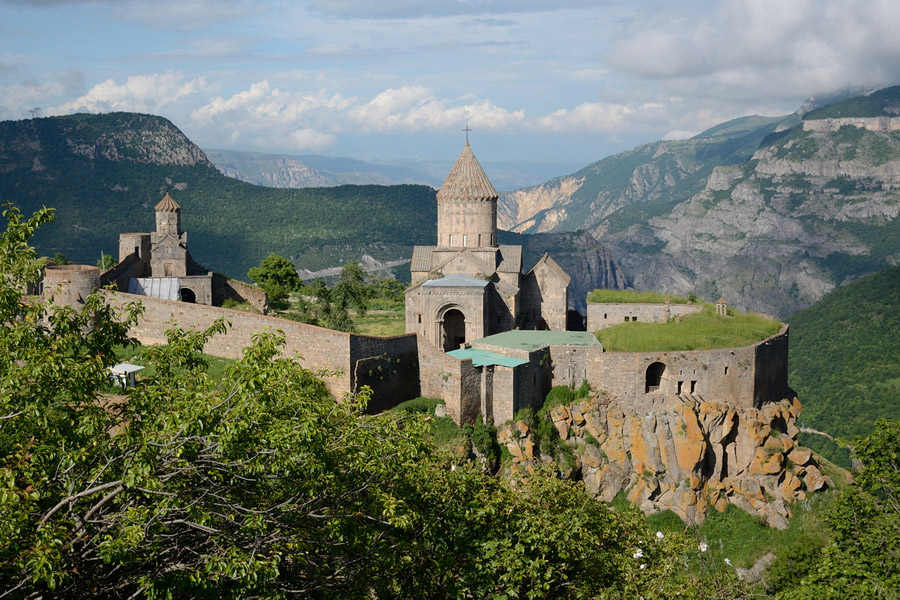
Getting there is an adventure. You’ll descend into a 500-meter canyon, take a moment at the natural Devil’s Bridge near some warm mineral springs, and then make your way up a winding mountain road. As you turn the bends, the monastery emerges like a mighty fortress on a cliff.
Strategically placed, Tatev served as both a religious and political hub of the Syunik principality. It was also home to the Metropolitan of Syunik and controlled extensive lands and workshops, with many villages paying tribute to it. The monastery saw a golden age in the 13th and 14th centuries, during which it housed the Tatev University, a major center for philosophical and scientific thought.
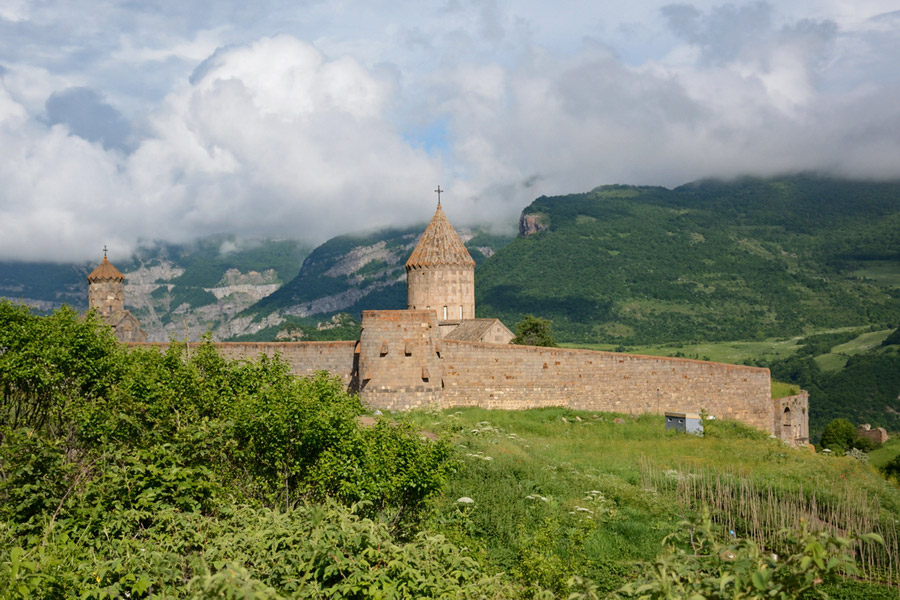
The name Tatev is derived from Saint Eustathius (Eustathios-Statevos-Tatev), a disciple of Apostle Thaddeus who was martyred in the region. The name translates from Old Armenian as "give wings," fitting for a monastery perched so high it seems to reach for the sky.
History
The Tatev Monastery was established in the 9th century, with its dedication attended by notable figures including King Smbat I Bagratuni and several catholicoses. Initially, it thrived, benefiting from substantial land donations from various patrons.
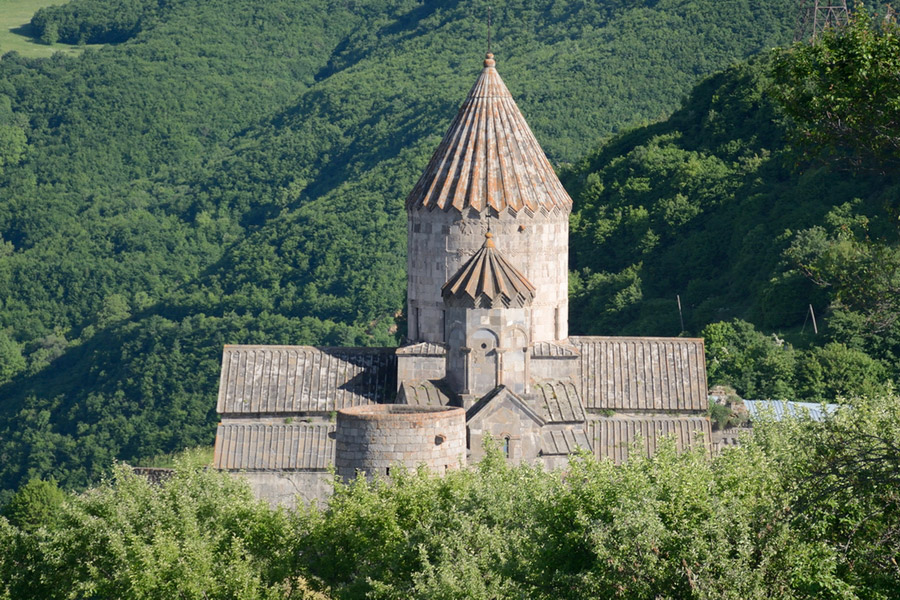
The Tatev Monastery faced numerous challenges throughout its history. In 1138, a major earthquake inflicted significant damage, destroying the dome of the Church of Saints Peter and Paul (Surb Pogos-Petros) and severely damaging the Church of Saint Gregory the Illuminator. Worse devastation followed in 1170 when the Syunik kingdom was ravaged by a brutal raid by Seljuk Turks. This raid not only led to the plundering of the monastery’s treasures but also the slaughter of many of its monks. The attackers also destroyed over 10,000 manuscripts housed in the Tatev library, a loss of immense cultural and historical significance.
This period of decline lasted nearly a century until princes Smbat and Tarsaich Orbelyan spearheaded efforts to restore the monastery in 1261. This restoration marked the beginning of a renaissance for Tatev, which by the 13th and 14th centuries had risen to prominence again. It became a political and spiritual powerhouse in the region, hosting the Tatev University, which was a beacon of medieval philosophical and scientific thought. The university and the monastery's seminary attracted scholars from across Armenia, turning Tatev into a crucial center of learning and culture.
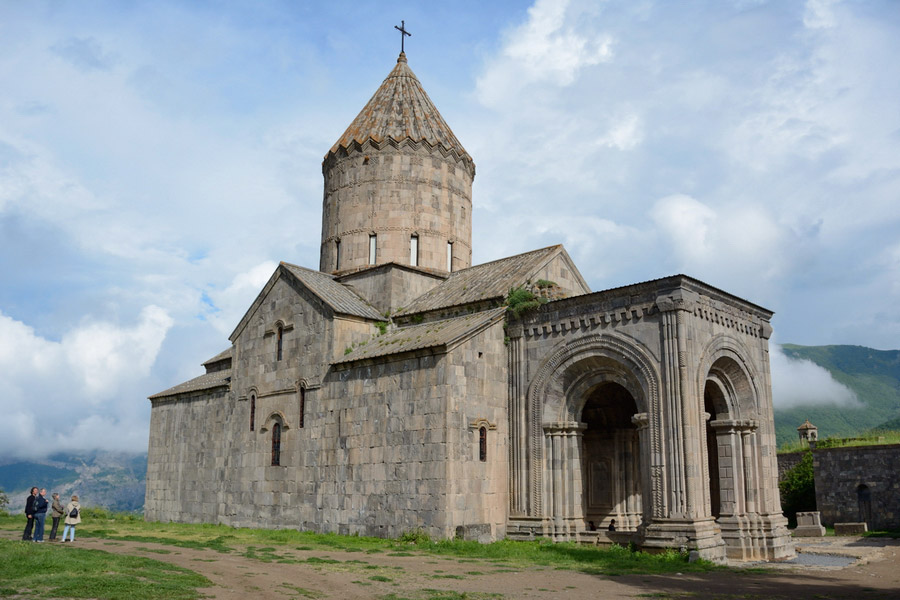
Today
Today, the Tatev Monastery stands proudly restored to its ancient majesty. The complex is anchored by the Church of Saints Peter and Paul, the largest and central structure, which impressively grows out of the stone base, lending a monumental quality to the ensemble. The architecture blends archaic elements with modern nuances, particularly visible in the cathedral’s high, umbrella-vaulted dome adorned with external reliefs that capture human faces and serpentine figures.
Adjacent to this is the Church of Saint Gregory the Illuminator, constructed in 848 by Prince Pilipos of Syunik, who also donated the surrounding village to the monastery. This church is connected to the south side of the main cathedral and adds to the historical depth of the site.
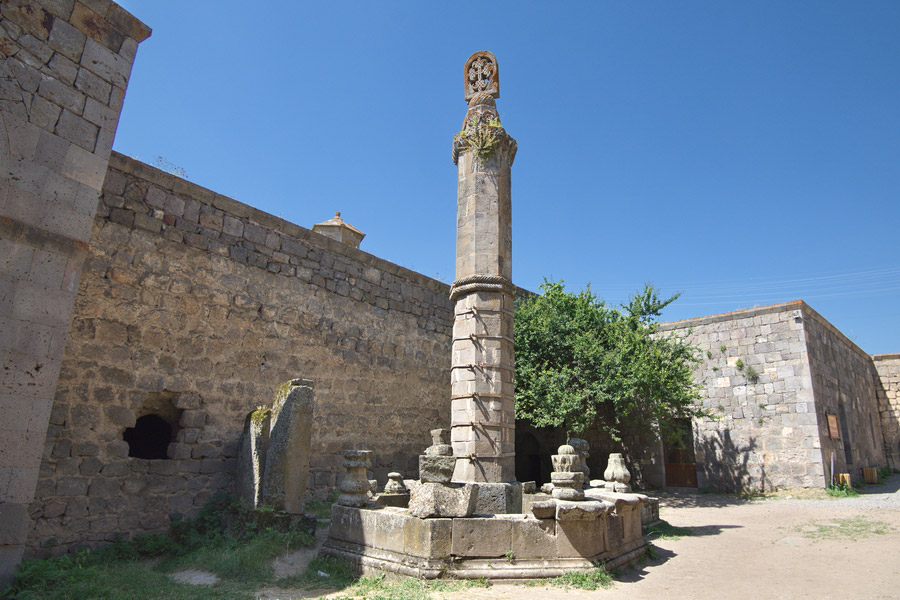
The "Gavazan" monument, a unique architectural and engineering masterpiece, stands in the courtyard near the living quarters. This eight-sided pillar, which is about 8 meters tall and built from small stones, is capped with a beautifully ornamented cornice topped by a khachkar. Designed to sway slightly with the wind, it showcases the sophisticated engineering skills of medieval Armenia.
Another noteworthy structure is the Church of Holy Astvatsatsin, built over an ancient monastic tomb in 1087. This church, a small domed hall with niches, follows the traditional Armenian practice of building religious structures over burial sites, reflecting an early medieval custom.

The monastic complex also includes the abbot's quarters, a bell tower, and a vaulted dining hall with a kitchen, alongside storerooms and both living and service areas, constructed in the 17th and 18th centuries. These additions contribute to the functional and historical fabric of the monastery.
Visitors to Tatev today are transported into an atmosphere of sacred mystery and architectural splendor. The monastery's location on a cliff provides stunning views of the surrounding mountains and the deep Vorotan River gorge below. The combination of natural beauty, architectural innovation, and rich history makes Tatev a profound destination for both pilgrims and tourists alike.



